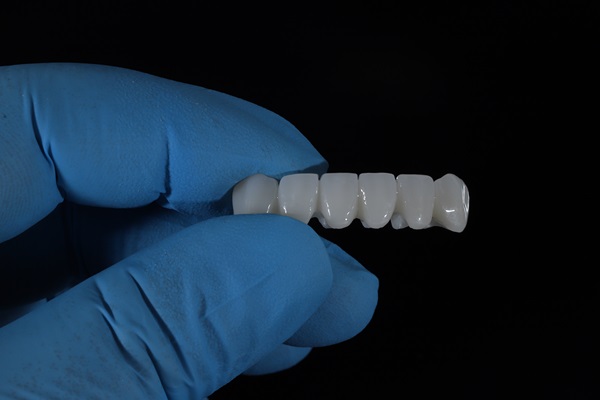A General Dentist Shares Some Signs of Oral Cancer

Wondering what the signs of oral cancer are? General dentists are specifically trained in performing oral cancer screenings and thus know exactly what to look for. Dental patients can also check for signs in between screenings.
How general dentists perform an oral cancer screening
Learning how general dentists perform oral cancer screenings will help dental patients know what to expect when undergoing this important test. The first step is thoroughly examining the patient's tongue, including underneath the tongue. Next, it is necessary to feel inside of the patient's cheeks, look at and feel the top of their mouth, examine their tonsils and then lastly, feel the neck for any signs of enlarged lymph nodes.
According to the mayo clinic, the goal of oral cancer screening is to identify mouth cancer early, when there is a greater chance for a cure.
Common symptoms of oral cancer
The list below includes some of the more common symptoms general dentists look for that are directly associated with oral cancer.
A sore that is not healing
The fact that general mouth sores tend to be quite common in many dental patients, means that many sores found in a patient's mouth are not going to be cancerous. Because it can be difficult for patients to know whether a sore is cancerous or not, it is necessary for a general dentist to perform a thorough oral examination in order to identify any unusual sores that may indicate oral cancer. If any questionable sores are found, further testing is necessary to determine if the sore is indeed cancerous.
White or red patches
When a patient has red patches or white patches in their mouth, it is a sign that there is abnormal cell growth taking place. When any red or white patches remain in a patient's mouth for at least two weeks, these patches need to be examined by a dentist. These patches may be found on the lips, the gums, the tongue, the cheeks and the tonsils. It is possible that any red or white patches found could be due to a fungal infection, making a diagnosis necessary. In other scenarios, the patches may be an indicator that oral cancer is present or developing.
Consistent pain
While many dental patients experience some degree of pain in their mouth from time to time, consistent pain is a sign that something is wrong. General mouth pain and even ear pain that does not go away may be a sign of oral cancer. Dental patients who experience pain when swallowing may also have this type of cancer. Anytime a patient experiences pain in or around their mouth area, it is necessary to make an appointment with an experienced general dentist to undergo an oral cancer screening as soon as possible.
In need of a screening?
Dental patients who are in need of an oral cancer screening can simply make an appointment with a general dentist. The screening procedure is not at all painful and does not take long to perform. The overall goal is to catch oral cancer in its earliest stages, as this type of cancer is often successfully treated when caught early enough.
Request an appointment here: https://irvineimplantdentistry.com or call Canyon Dentistry at (949) 753-6000 for an appointment in our Irvine office.
Check out what others are saying about our dental services on Yelp: Oral Cancer Screening in Irvine, CA.
Recent Posts
There are certain risk factors for oral cancer that are important to be mindful about. Along with routine oral cancer screenings from your dentist, it is encouraged to check for any early signs of oral cancer every so often, especially if you meet one or more of the criteria for being at higher risk. By understanding…
Are you thinking about making an appointment with a laser dentistry? This recent form of dentistry is becoming more common in both preventive and restorative care. It is helpful to learn more about what this professional can do and how visiting one can benefit your oral health and smile. In laser dentistry, the dentist can…
Preventive dentistry is important in maintaining oral health. Visits in this field of dentistry involve treatment and dental education. These appointments aim to prevent gum disease, cavities, and enamel wear. They result in an attractive smile and healthy teeth. If you want to know more about vital preventive dentistry visits, here are the details.Preventing the…
A traditional dental bridge can replace up to three or four consecutive teeth on the same side of a dental arch. It is one of the most common dental replacements you can get. Knowing how to care for it can help maintain your new smile for a long time. Here are some tips for ensuring…


